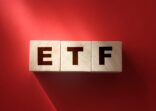Performance review
The ChinaAMC ETF is yet to complete its three-year milestone. But the ETF has outperformed the BOC ETF during the period from its launch on 26 October 2012 until 15 July, according to FE data:

Even over one-year period, the ChinaAMC ETF has outperformed the BOC ETF, as seen in the table below. However, both funds have underperformed the underlying index.
“One of the advantages of synthetic ETFs is that they are generally able to replicate an index with a lower tracking error.
“This, however, does not seem to be the situation with the BOC ETF as it has a larger tracking error and underperforms the ChinaAMC ETF,” Drago pointed out.
Performance over various time periods for BOC ETF and Hong Kong dollar-denominated ChinaAMC ETF until 13 July:

Source: Bloomberg data on 13 July*The HKD-denominated fund completes a three-year track record on 26 October.
“The BOC ETF shows a wide discrepancy in its tracking capabilities. Based on the one-year return, the BOC ETF underperformed the CSI 300 Index by 24.4%,” said Drago.
There are also large differences in daily traded volumes, with ChinaAMC trading 10 times more than BOC, said Drago.
The 30-day trading volume for the BOC product was 2.3 million compared to 22.6 million for the ChinaAMC ETF, Drago said, citing Bloomberg data on 13 July.
Meanwhile, the number of shares outstanding for both ETFs has decreased amid the recent market volatility. An increase in the number of outstanding shares indicates increasing investor appetite for the product, and a decrease is vice versa.
On 14 July, the outstanding shares for the BOC ETF has decreased to 131 million from its high of 316 million reached on 30 September 2014.

Source: Bloomberg
The ChinaAMC vehicle currently has outstanding shares of nearly 342 million, down from high of 429 million on 9 November 2014.
“The ChinaAMC ETF has also seen a fall in its outstanding shares, but it has strongly rebounded in the last four weeks as per the chart below,” Drago explained.

Source: Bloomberg
An ETF may trade at a discount or premium to its net asset value depending on market conditions and investor interest. In general, ETFs trade at a premium to NAV when there is strong interest in the underlying from investors.
Conversely, the products trade at a discount during periods of downside volatility or bear markets or when selling pressure is high or demand is weak.
During the recent plunge in onshore markets, both ETFs traded at a discount.
However, Drago pointed out that the BOC ETF had been trading at discount to the NAV before the market correction. This could indicate lower interest in the BOC vehicle.
“On 8 Jul, the discount to NAV for the BOC ETF was 17.9% and it has been largely negative since November. The BOC ETF’s discount to NAV has averaged by more than 3% for much of the last 12 months.”
On the other hand, the ChinaAMC ETF has traded in line with its NAV historically, except during the recent exceptionally volatile period, said Drago.
“On 8 July, the ChinaAMC ETF traded at a 15.9% discount to its NAV. There were large redemptions. This deep discount was quickly erased a day later as the ETF resumed tracking the underlying NAV closely again.”
Over the last 12 months, the ChinaAMC ETF has fluctuated less than 1% of its net asset value, Drago added.















